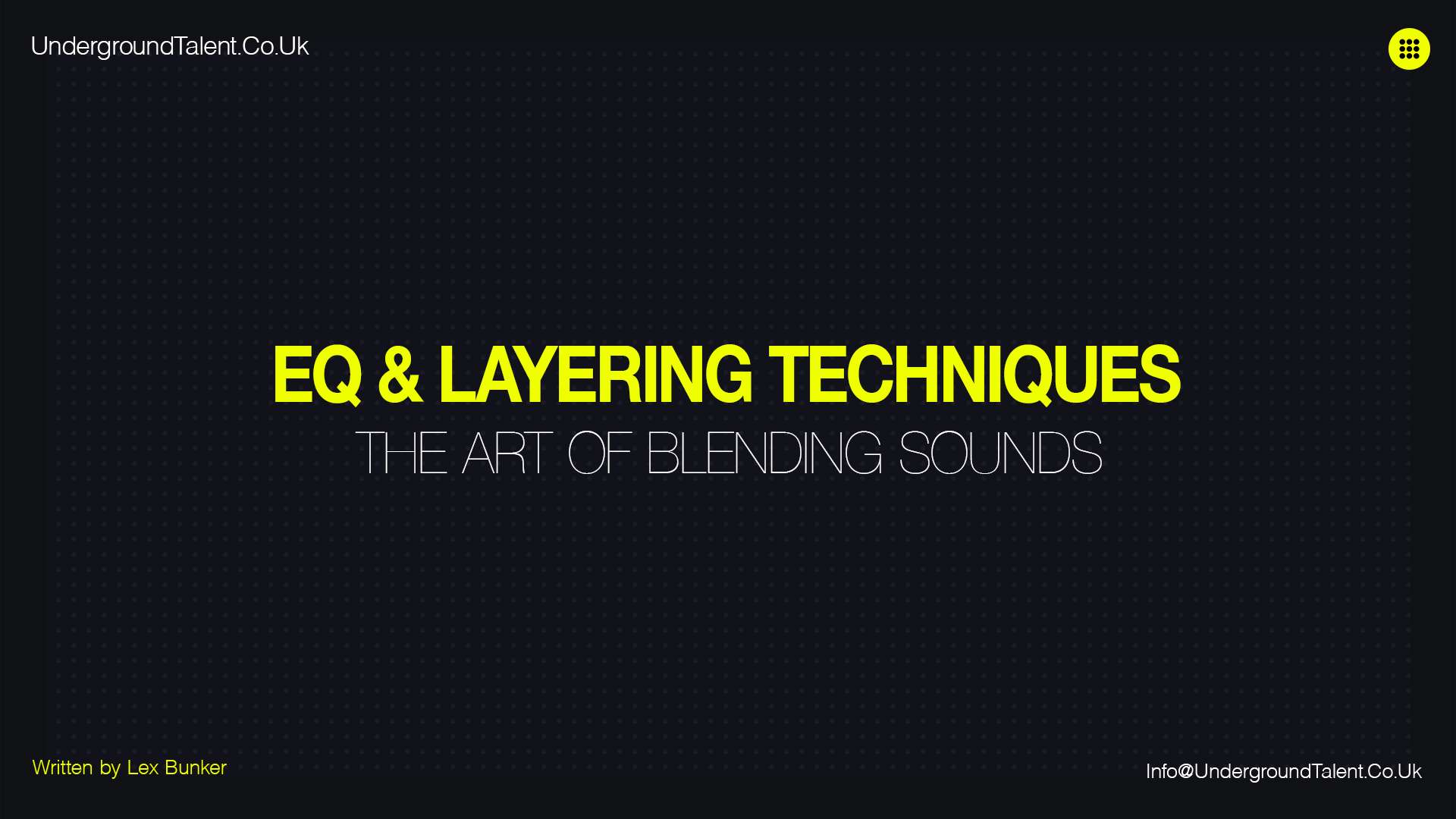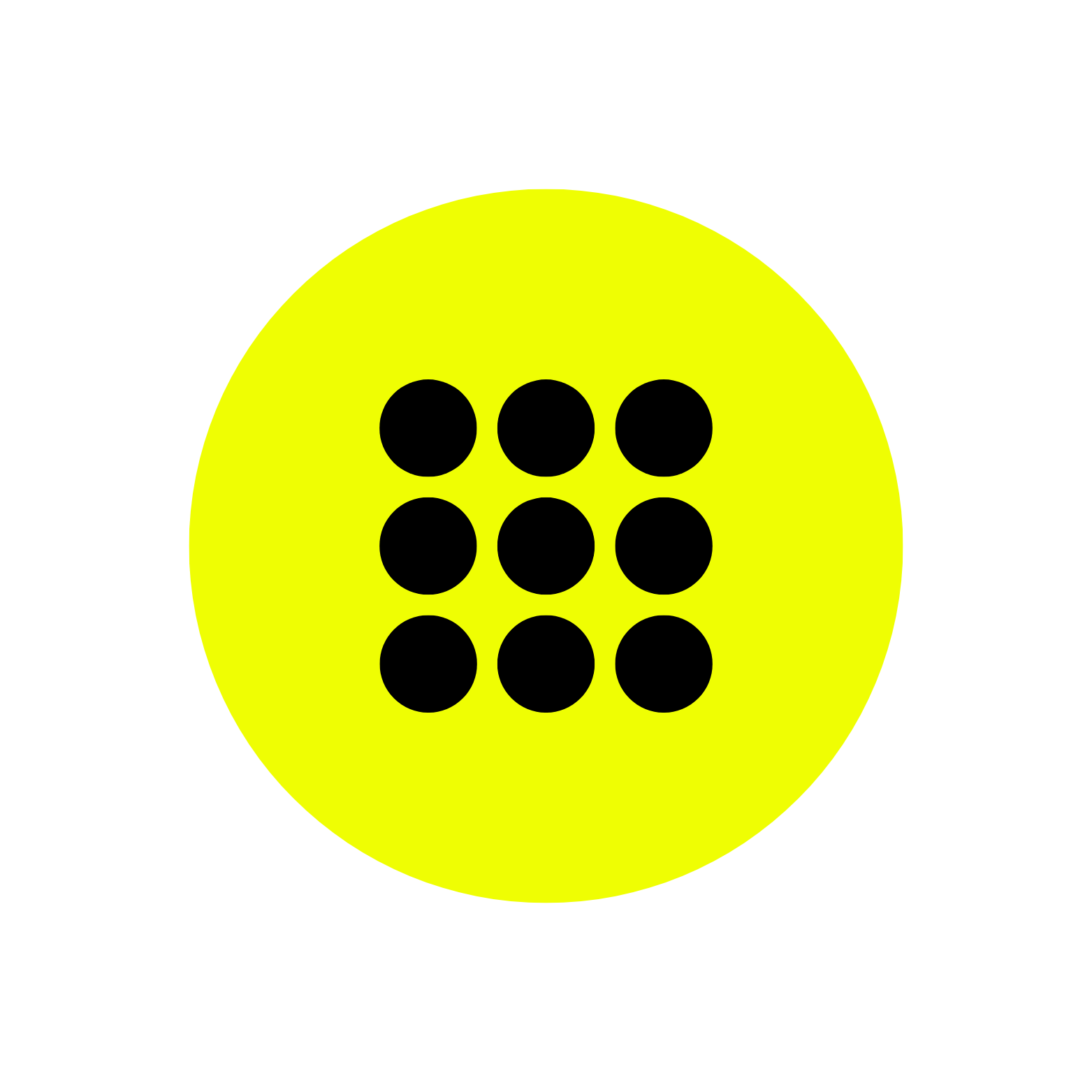Introduction: EQ and Layering Techniques
Welcome to the fascinating world of sound engineering, where the art of blending sounds and instrumentation takes centre stage, using EQ and layering techniques.
This process, a cornerstone of techno music production, involves the strategic use of Equalization (EQ) and layering techniques. EQ is a powerful tool that allows us to balance the frequencies within a mix, ensuring each element can be heard clearly and contributes effectively to the overall sound.
Layering, on the other hand, involves stacking multiple synth sounds to create a richer, fuller sound. Together, these techniques play a crucial role in shaping the sonic landscape of a track, allowing us to create music that is not only pleasing to the ear but also deeply immersive.
In this article, we’ll delve into these techniques, providing you with the knowledge you need to elevate your music production skills. So, whether you’re a seasoned producer or a beginner looking to learn the ropes, this guide is for you.
Let’s dive in!

Read Also: Mixing Electronic Music: Fundamentals and Objectives
Understanding EQ Techniques
Equalization, or EQ as it’s commonly known, is a fundamental technique in sound engineering and music production. It’s akin to a painter’s palette, allowing us to shape and colour the sounds in our mix. But what exactly is EQ, and why is it so important in blending synths and instrumentation?
At its core, EQ is a tool that allows us to boost or cut specific frequency ranges within a sound. This enables us to highlight the elements we want to stand out and reduce those that may be causing conflicts. When blending synths and instrumentation, EQ is crucial. It ensures that each element has its own ‘space’ in the frequency spectrum, preventing clashes and creating a balanced, harmonious mix.
Don’t Miss: Techno Sequences for u-He Diva. Designed by Erald.
There are several common EQ techniques used in music production, each serving a unique purpose:
High-Pass Filtering
This technique involves cutting off the frequencies below a certain point. It’s often used to remove unnecessary low-end rumble from non-bass elements, helping to clean up the mix.
Low-Pass Filtering
The opposite of high-pass filtering, this technique cuts off the frequencies above a certain point. It’s useful for taming harsh high-end frequencies.
Boosting
This involves increasing the level of certain frequencies to highlight a particular element of the sound. For example, you might boost the high-mid frequencies of a synth to make it stand out in the mix.
Cutting
This involves reducing the level of certain frequencies to prevent them from clashing with other elements. For instance, you might cut the low-mid frequencies of a pad synth to prevent it from muddying the bass.
Notch Filtering
This is a precise form of cutting, used to remove a very narrow band of frequencies. It’s often used to eliminate problematic frequencies that are causing resonance or feedback.
Understanding and effectively using these EQ techniques is a vital part of blending synths and instrumentation. By giving each element its own space in the mix, we can create a sound that is balanced, clear, and full of depth.
Read Also: Mixing Environment: DAW Configuration and Monitoring
The Art of Layering Sounds
Layering sounds is a technique that involves combining multiple sounds to create a more complex, richer sound. Think of it as building a sonic skyscraper, with each synth layer adding a new floor, contributing to the overall structure and design.
The importance of layering in music production cannot be overstated. When done correctly, it can add depth, richness, and complexity to your sound, transforming a simple melody into a captivating sonic landscape. It’s particularly useful in genres like techno, where synths are often the driving force of the track.
Here’s a step-by-step guide on how to layer synths effectively:
Choose Your Sounds
Start by selecting the synths you want to layer. Each synth should bring something unique to the mix, whether it’s a different timbre, rhythm, or frequency range.
Balance the Levels
Once you’ve chosen your synths, adjust the levels to ensure that no one synth is overpowering the others. This balance is crucial for a harmonious blend.
Apply EQ
Use EQ to carve out a unique space in the frequency spectrum for each synth. This will prevent frequent clashes and ensure each synth can be heard clearly.
Pan Your Sounds
Panning your synths across the stereo field can add width and depth to your sound. Just be careful not to pan too far, as this can cause issues with mono compatibility.
Add Effects
Effects like reverb and delay can help to glue your synths together and create a sense of space. However, use them sparingly to avoid muddying your mix.
Check Your Mix
Finally, always check your mix on different sound systems to ensure your synth layers sound good on all platforms.
Layering sounds is an art form. It requires patience, practice, and a keen ear. But when done right, it can take your music to new heights, creating a sound that is truly your own.
Don’t Miss: Techno Loops V1: High-Quality Analog Loops for Music Production
The Process of Blending: EQ and Layering Techniques
In the context of music production, blending is the art of combining different sounds in a way that they harmonize and complement each other. It’s like creating a musical smoothie, where each ingredient retains its unique flavour, yet contributes to a unified, delicious whole.
Blending is crucial to the overall sound of a mix. It helps to create a cohesive soundstage, where each element, whether it’s a synth, a drum beat, or a vocal line, fits together seamlessly. When done effectively, blending can make a mix sound polished and professional, enhancing the listener’s experience.
Here are some tips and techniques for effective blending:
Use EQ Wisely
EQ is your best friend when it comes to blending. Use it to carve out a unique space in the frequency spectrum for each element in your mix. This will help to prevent frequency clashes and ensure each element can be heard clearly.
Balance Your Levels
Make sure no single element is overpowering the others. Use volume faders and compression to balance the levels of your mix.
Pan Strategically
Panning can help to create a sense of space and depth in your mix. Don’t be afraid to move elements off the center line, but remember to check your mix in mono to ensure it still sounds good.
Use Reverb and Delay
These effects can help to glue your mix together and create a sense of space. However, use them sparingly to avoid muddying your mix.
Listen Critically
Always listen to your mix with a critical ear. If something doesn’t sound right, don’t be afraid to tweak it. Remember, blending is an iterative process.
Reference Other Tracks
Listen to other tracks in your genre for inspiration. Pay attention to how they blend their elements and try to apply those techniques to your own mix.
Blending is an art form. It requires patience, practice, and a keen ear. But when done right, it can take your music to new heights, creating a sound that is truly your own.
Read Also: Techno Sample Pack: Unleash Your Creativity with Techno Shots
Advanced Techniques: EQ and Layering Techniques
As we delve deeper into the world of sound engineering, we encounter advanced techniques that can further enhance our blending skills. Among these are sidechain compression, synth bass, and stacking. Let’s explore these techniques and understand their role in music production.
Sidechain Compression
This is a technique where the level of one sound is reduced based on the level of another sound. In the context of blending synths, sidechain compression is often used to allow a kick drum to cut through a dense synth mix. By reducing the level of the synths every time the kick hits, we create a rhythmic ‘pumping’ effect that can add a sense of groove and movement to the track.
Synth Bass
The synth bass is a type of synthesized sound that is used to replicate or enhance the sound of a traditional bass instrument. In techno music, synth bass often plays a central role, providing the low-end foundation of the track. When blending synths, it’s important to give the synth bass its own space in the mix, often achieved through careful EQ and sidechain compression.
Stacking
Stacking is a technique that involves layering multiple instances of the same or similar sounds to create a richer, fuller sound. In the context of synths, this could mean layering several different synth sounds playing the same melody. Each layer adds its own unique character to the sound, resulting in a more complex and interesting final product.
These advanced techniques, when used effectively, can greatly enhance the quality of your blends. They allow for more control over the mix, enabling you to create a more polished, professional sound. As with all techniques in music production, they require practice to master, but the results are well worth the effort.
Read Also: EQ Techniques: Frequency Balance in Electronic Music Mixing
Overcoming Common Challenges: EQ and Layering Techniques
In the journey of blending synths and instrumentation, you’re likely to encounter a few common challenges. These include muddiness, masking, and phase cancellation. Let’s delve into what these challenges entail and how to overcome them.
Muddiness
This refers to a mix that lacks clarity and definition, often due to too many elements occupying the same frequency range. To combat muddiness, use EQ to carve out a unique space in the frequency spectrum for each element. High-pass filtering can be particularly useful for removing unnecessary low-end from non-bass elements.
Masking
Masking occurs when a loud element in the mix makes it hard to hear a quieter one. This is often a result of frequency overlap between the two elements. To overcome masking, you can use EQ to cut frequencies from the louder element in the range where the quieter element sits. Alternatively, you can use sidechain compression to automatically reduce the level of the louder element when the quieter one is playing.
Phase Cancellation
This phenomenon occurs when two sounds with the same frequency are out of phase, causing them to cancel each other out. This can result in a thin, weak sound. To prevent phase cancellation, ensure that your synth layers are in phase with each other. If you’re using stereo-widening effects, check your mix in mono to ensure it still sounds good.
Overcoming these challenges requires a keen ear and a good understanding of the tools at your disposal. Remember, the goal is to create a balanced, harmonious mix where each element can be heard clearly. With practice, you’ll be able to navigate these challenges and create blends that sound polished and professional.
Read Also: Dynamic Processing Techniques: Achieving Balance and Control
Practical Examples
Understanding the theory behind blending synths and instrumentation is one thing, but seeing these techniques in action can truly illuminate their potential. Let’s explore some practical examples of how these techniques can be applied in a mix and the impact they can have on the final sound.
Layering Synths for a Richer Sound
Imagine you’re working on a techno track, and you have a lead synth line that feels a bit thin. To add depth and richness to the sound, you decide to layer it with two other synths. One synth adds a gritty texture, while the other adds a high-end sparkle. After balancing the levels and applying EQ to carve out a unique space for each synth, you find that your lead line now has a full, rich sound that carries the melody beautifully.
Using Sidechain Compression for Groove
In another track, you have a dense synth pad that’s clashing with your kick drum. To solve this, you apply sidechain compression to the synth pad, triggered by the kick. Now, every time the kick hits, the level of the synth pad dips, creating a rhythmic ‘pumping’ effect. This not only allows the kick to cut through the mix but also adds a sense of groove to the track.
Overcoming Masking with EQ
You’re working on a track with a powerful synth bass and a mid-range synth lead. However, the lead is getting lost in the mix. You realize that the frequencies of the bass are masking the lead. To overcome this, you use EQ to cut some frequencies from the bass in the range where the lead sits. The result? Your lead synth cuts through the mix, and the bass still provides a solid foundation.
These examples illustrate how blending techniques can dramatically improve the quality of a mix. By applying these techniques, you can create a balanced, harmonious sound where each element has its own space to shine. The impact on the final mix is a professional, polished sound that captivates the listener.
Read Also: Creating Depth and Ambiance: Reverb & Delay in Electronic Music
Conclusion on EQ and Layering Techniques
In this journey through the art of blending synths and instrumentation, we’ve explored a range of techniques, from the fundamentals of EQ and layering to advanced methods like sidechain compression and overcoming common challenges like muddiness, masking, and phase cancellation. We’ve seen how these techniques can be applied in practical examples, demonstrating their potential to transform a mix.
The key takeaway is that blending is an essential skill in music production, particularly in genres like techno where synths play a central role. By understanding and effectively applying these techniques, you can create a balanced, harmonious mix where each element contributes to a unified, captivating sound.
But remember, these techniques are just tools in your toolbox.
The real magic happens when you experiment and find your own unique approach to blending. So, don’t be afraid to try new things and push the boundaries. After all, music production is as much an art as it is a science.
Happy mixing!
Read Also: Mixing Drums and Percussion: Strategies for Tight Drums
FAQs on EQ and Layering Techniques
Here are 10 questions people often ask about:
What is blending in the context of music production?
Blending in music production refers to the process of combining different sounds in a way that they harmonize and complement each other, creating a unified, cohesive sound.
What is the role of EQ in blending synths and instrumentation?
EQ allows us to balance the frequencies within a mix, ensuring each element can be heard clearly and contributes effectively to the overall sound. It’s a crucial tool in blending synths and instrumentation.
What is sound layering?
Sound layering is a technique that involves combining multiple sounds to create a more complex, richer sound. It adds depth and complexity to the sound, transforming a simple melody into a captivating sonic landscape.
What is sidechain compression and how is it used in blending synths?
Sidechain compression is a technique where the level of one sound is reduced based on the level of another sound. In blending synths, it’s often used to allow a kick drum to cut through a dense synth mix, creating a rhythmic ‘pumping’ effect.
What is synth bass and how is it used in music production?
Synth bass is a type of synthesized sound used to replicate or enhance the sound of a traditional bass instrument. In music production, it often provides the low-end foundation of the track.
What is stacking in the context of blending sounds?
Stacking involves layering multiple instances of the same or similar sounds to create a richer, fuller sound. For example, in the context of synths, this could mean layering several different synth sounds playing the same melody.
What are some common challenges in blending synths and how can they be overcome?
Common challenges include muddiness, masking, and phase cancellation. These can be overcome by using EQ to carve out a unique space in the frequency spectrum for each element, balancing levels, and ensuring synth layers are in phase with each other.
What is the impact of blending on the final mix?
Blending contributes to a balanced, harmonious mix where each element can be heard clearly. It can make a mix sound polished and professional, enhancing the listener’s experience.
How can I thicken up instruments with layering?
Layering can be used to thicken up instruments by adding depth and richness to the sound. This involves combining multiple sounds, balancing their levels, applying EQ, panning, and adding effects.
How do you EQ and process synth pads?
Synth pads can be EQ’d and processed by adjusting their frequencies to taste while playing the full mix, letting the leads and drums stand out. Layering them and processing them individually can also be effective. Saturation can be added to give some presence without losing the lower mid-range.
Read Also: Stereo Imaging: Techniques for Wider Mix
Connect with Underground Talent if you liked the article on “EQ & Layering Techniques”
Connect with us on Facebook, Soundcloud, and Instagram. Share your thoughts and feedback on this article. We’re here to educate and inform you. Email us at info@undergroundtalent.co.uk for questions or comments.
Discover the latest underground talent! Subscribe to our YouTube channel now. Stay on top of fresh and exciting new acts in the techno scene. Join our community of techno music lovers today. Click the subscribe button.
Download Free: Techno Sample Pack: 64 One-Shot Samples + Producers Tips
And Always Remember…
Have Fun & Be Creative!




